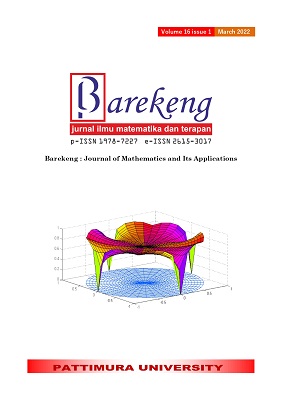INTERPRETABLE PREDICTIVE MODEL OF NETWORK INTRUSION USING SEVERAL MACHINE LEARNING ALGORITHMS
Abstract
Network intrusion is any unauthorized activity on a computer network. Attacks on the network computer system can be devastating and affect networks and company establishments. Therefore, it is necessary to curb these attacks. Network Intrusion Detection System (NIDS) contributes to recognizing the attacks or intrusions. This paper explains the factors that influence network attacks. Some machine learning methods are used such as are logistic regression, random forest XGBoost, and CatBoost. The best model is chosen from these models based on its accuracy level. Classification modeling is divided into two types, namely using a dummy and not using dummy variables. The best method for predicting network intrusion is a random forest with a dummy variable that has an Area Under Curve (AUC) value of 92.31% and an accuracy of 90.38%.
Downloads
Authors who publish with this Journal agree to the following terms:
- Author retain copyright and grant the journal right of first publication with the work simultaneously licensed under a creative commons attribution license that allow others to share the work within an acknowledgement of the work’s authorship and initial publication of this journal.
- Authors are able to enter into separate, additional contractual arrangement for the non-exclusive distribution of the journal’s published version of the work (e.g. acknowledgement of its initial publication in this journal).
- Authors are permitted and encouraged to post their work online (e.g. in institutional repositories or on their websites) prior to and during the submission process, as it can lead to productive exchanges, as well as earlier and greater citation of published works.






1.gif)



